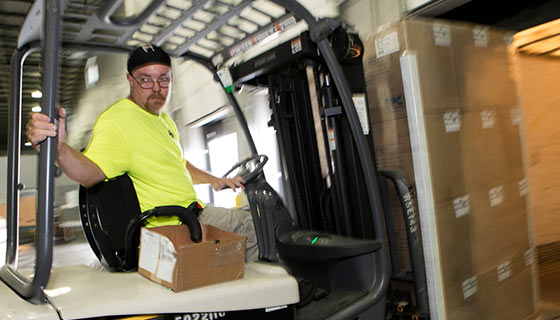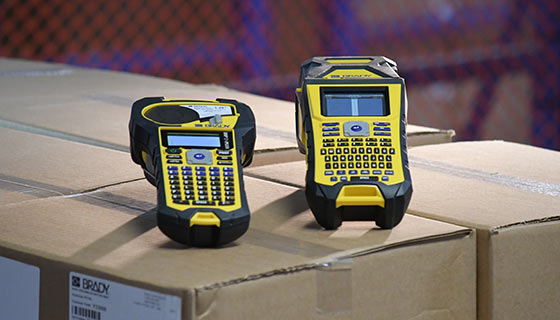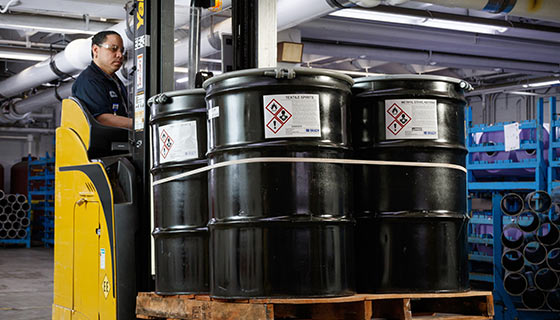Labels for Safety, Visuals and Facility ID Desktop Printers
Labels for Product, Wire and Lab ID Benchtop Printers
Labels for Safety, Visuals and Facility ID Desktop Printers
Labels for Product, Wire and Lab ID Benchtop Printers
Safety and Facility ID Desktop Printers
Product, Wire and Lab ID Benchtop Printers
Barcode Scanner and Printer Kits
Barcode Scanner and Printer Kits
PaintStripe Floor Marking Stencils
Valve Lockouts & Hose Lockouts
Group Lock Boxes & Permit Control
Brady Safety Lockout Tagout Services
Pipe Marker Accessories & Mounting Brackets
Maintenance and Production Tags
Calculators and Assessment Tools
Product Finders and Data Sheets
E-commerce and delivery services have been growing explosively in recent years, and they’re not slowing down any time soon. One analysis suggests that e-commerce and complementary fulfillment services will grow at a rate of approximately 6.5% from 2020 to 2027. And for e-commerce and delivery services to operate efficiently, they need substantial support from fulfillment centers.
The demand for faster deliveries can mean more air pollution, and there are concerns that our dependence on delivery services may be creating a significant carbon footprint. So it should come as no surprise that interest in more sustainable fulfillment options is increasing. Luckily, there are many ways for businesses to adjust their fulfillment strategies and choose their business partners wisely to reduce their footprint.

Efficiency is a key part of reducing waste and harmful emissions, as it can minimize the amount of energy needed to produce and transport items, as well as the number of mistakes that result in unusable products. In large part, increased efficiency and accuracy in fulfillment processes can be achieved through digitization and automation, which reduce the impact of human error.
Automation can be applied to a wide variety of fulfillment processes, from data transfer to security measures to the operation of the machinery itself. Automated selection, labeling and organization can drastically reduce errors and speed up the fulfillment process, offering the advantage of timeliness in addition to sustainability. Automation can also be a valuable option to ensure seamless collaboration between different companies and facilities, making processes more uniform.
Although a global economy brings many benefits to companies and consumers alike due to increased options and availability of products, it also poses unique challenges. Most notably, it can result in inconsistencies in how different parts of a supply chain operate, as well as some general opacity within supply chains. The company outsourcing production and fulfillment may not realize that unsustainable practices are taking place within parts of the supply chain, or may have difficulty discerning whether they are.
For this reason, research and communication are vital if you are invested in sustainable fulfillment practices. Always ensure that you do your research on companies that you are considering partnering with, make sure they understand your expectations regarding sustainability and ask questions about their protocols. It will also be helpful to maintain an open line of communication in case other concerns or considerations come up.
As mentioned, efficiency is a vital component of sustainability, so it is important that a fulfillment service employs an effective inventory management strategy. A few hallmarks of an efficient inventory management strategy are:

It is important to note that although digitization and automation are helping to promote sustainability in the inventory management process, an inventory management strategy can be fairly sustainable without being fully automated — as long as their processes are well-ironed out and they engage in mindful reduction of physical materials wherever possible.
For example, the use of handheld labeling options can be an effective and consistent means of maintaining organization, as long as employees are well-trained on protocols and any associated organizational software is carefully integrated with these manual processes. This combination of human and digital efforts can create a helpful checks-and-balances system, where the machines reduce human error, but the humans can review any mistakes such as inaccurate input.
A significant source of waste related to fulfillment is packaging. While packaging typically can’t be avoided entirely, there are several ways that waste related to packaging can be reduced significantly, including:
It can also be helpful for usage and marketing purposes if you advise consumers of these efforts, either on the packaging itself, or through supplementary materials such as online receipts.
Sustainable packaging efforts should not only focus on the materials used, but also on sustainable disposal and recycling efforts within the facility. Fulfillment facilities should choose recyclable production materials whenever possible ensuring that they have effective protocols for sorting and recycling these materials after use. In cases where recycling is not an option, it is important to create protocols for appropriate and safe disposal.
Transportation is another major source of waste in the fulfillment process, as fuel burned during transport of products creates harmful emissions. There are many ways these emissions can be minimized, including:
Electric vehicles and even options such as drones can reduce carbon emissions.
Localized fulfillment centers can reduce the distance that needs to be covered.
By ensuring that orders are correct and shipped to the right address, you can reduce the chances that they will need to be returned or redirected.
By ensuring that orders are in good condition, you can reduce the chances that they will need to be returned and/or disposed of.
Carbon offsetting programs seek to balance out necessary emissions by taking steps to reduce emissions in other areas of business.
It is also important to properly label and secure materials that are being shipped, especially if they are hazardous, as accidental dumping or spillage could also be detrimental to the environment. That’s why there are internationally-recognized standards for marine transport labeling.

As mentioned, it is important to remain on the same page with your business partners throughout the supply chain. But it is also important to choose them carefully in the first place. When choosing partnerships that will promote sustainable fulfillment practices, consider the following factors:
It can also be helpful to choose business partners who are geographically close to your primary place or places of business, to ensure that they follow similar regulations and best practices, as well as to reduce emissions related to transport.